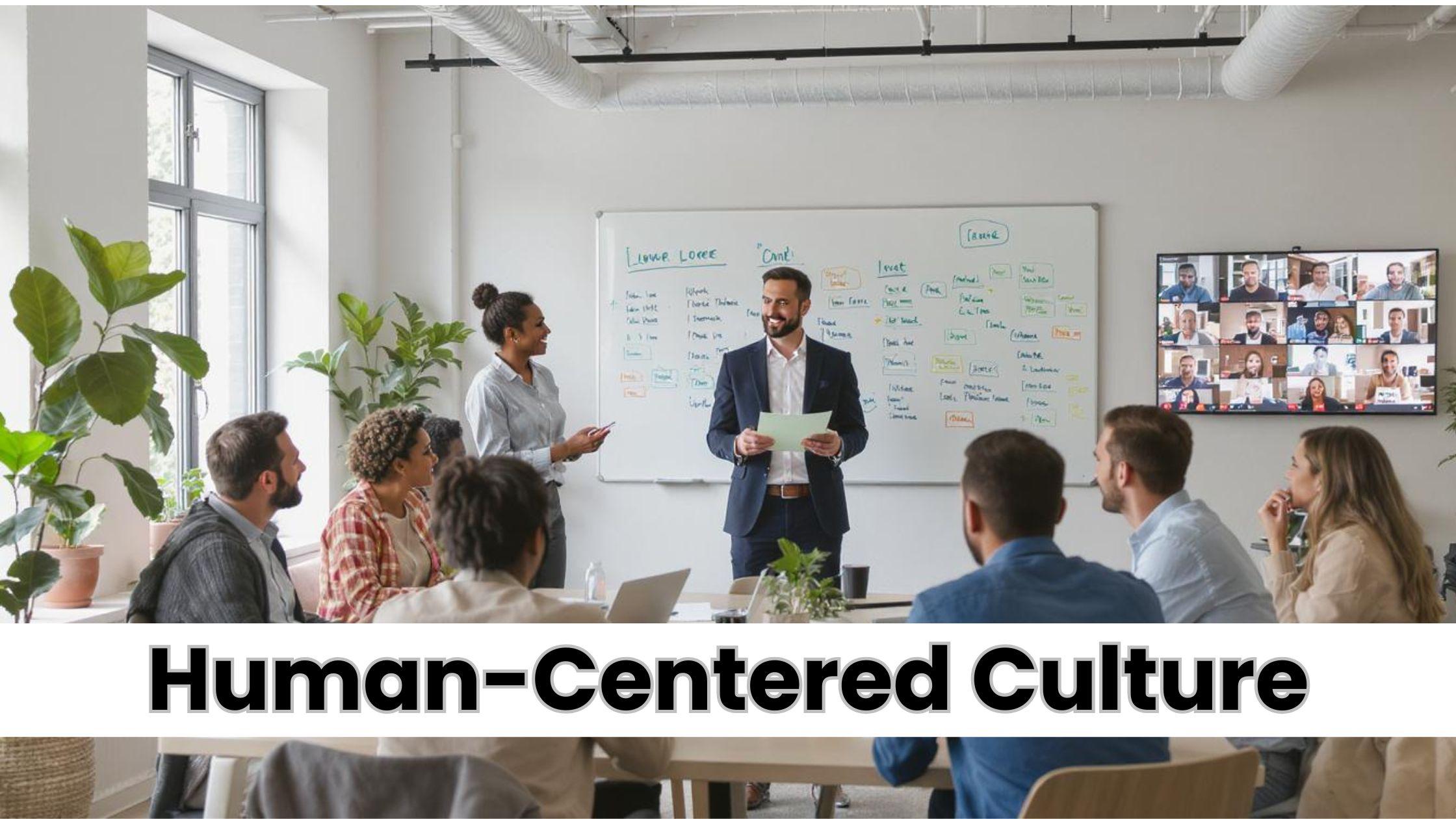Human-Centered Culture: Core of Workplace Transformation

Workplace agility is a defining factor for organizational success in today’s fast-paced business environment. True agility begins with a Human-Centered Culture, where employees are valued, empowered, and engaged. When organizations prioritize people over processes alone, they create the conditions necessary for teams to respond quickly, innovate effectively, and sustain adaptability over time.
Why Agility Requires a Human Touch
Agility is often associated with tools, workflows, and methodologies such as Agile, Lean, or Scrum. While these are valuable, they cannot achieve lasting impact without a culture that supports employees. Human-centered cultures ensure that employees have the trust, resources, and motivation to implement agile practices effectively. Agility becomes not just a framework but a mindset embedded in the organization.
Empowering Teams for Responsiveness
A human-centered culture empowers employees to take ownership of their work, make decisions, and experiment. Empowered teams are more responsive, creative, and resilient. When employees feel trusted and valued, they are more likely to embrace change, solve problems proactively, and contribute to a more adaptable and agile organization.
Psychological Safety as a Core Driver
Workplace agility is strengthened by psychological safety. Employees who feel safe to speak up, share ideas, and fail without fear are more likely to innovate and adapt. Human-centered cultures prioritize creating this safe environment, encouraging open communication, collaboration, and learning from mistakes. Psychological safety enables teams to respond quickly and confidently to dynamic challenges.
Leadership’s Role in Fostering Agility
Leaders are essential in shaping a human-centered culture. Traditional hierarchical leadership often slows decision-making and limits flexibility. In contrast, empathetic and inclusive leaders cultivate trust, engagement, and collaboration. Leaders who prioritize people create environments where teams are empowered to take initiative, innovate, and adapt, ensuring workplace agility is embedded across all levels.
Technology Supporting Employees
Technology is a key enabler of agility, but it must serve employees, not control them. Human-centered cultures integrate technology in ways that enhance productivity, reduce friction, and support decision-making. When employees feel comfortable and competent with tools, they can respond more quickly to changes, implement new processes effectively, and maintain high engagement.
Collaboration as an Agility Enabler
Effective collaboration is at the heart of agile workplaces. Human-centered cultures encourage knowledge sharing, cross-functional teamwork, and inclusive decision-making. Employees who feel respected and included are more willing to communicate openly, brainstorm solutions, and implement change, creating a culture of agility that permeates daily operations.
Engagement Drives Adaptability
Engaged employees are more likely to embrace change, contribute ideas, and sustain high performance. Human-centered cultures enhance engagement through recognition, professional growth opportunities, and inclusive policies. When employees are motivated and connected to the organization, agility becomes a natural extension of their work rather than an imposed process.
Continuous Learning and Agility
Agility relies on continuous learning and skill development. Human-centered cultures foster this by providing training, mentorship, and growth opportunities. Employees who are encouraged to learn and expand their capabilities are better equipped to adapt to market shifts, technological advancements, and evolving customer expectations. A learning-focused culture ensures that agility is a long-term organizational asset.
Resilience Through Supportive Practices
Resilience is a key attribute for agile teams. Human-centered cultures support employee well-being, mental health, and work-life balance, enabling teams to maintain performance under pressure. Resilient employees can navigate disruptions, recover from setbacks, and sustain productivity, all of which contribute to maintaining workplace agility over time.
Diversity and Inclusion Strengthen Agility
Diverse and inclusive teams enhance problem-solving, innovation, and adaptability. Human-centered cultures ensure that all employees feel valued and empowered to contribute their perspectives. Inclusion fosters collaboration and creates an environment where employees can respond to complex challenges with creativity and speed, enhancing overall organizational agility.
Customer-Centric Agility
Employees in human-centered workplaces are more empathetic and attuned to customer needs. Their engagement translates into improved service, faster response times, and higher satisfaction. By aligning internal culture with external expectations, organizations ensure that agility benefits both employees and customers, creating a sustainable competitive advantage.
Embedding Agility in Organizational Culture
Sustainable workplace agility requires integrating human-centered principles into daily operations. Trust, transparency, collaboration, and inclusion must guide all interactions. Organizations that prioritize people empower employees to make informed, flexible decisions and respond effectively to change, ensuring that agility becomes a consistent and ingrained capability.
Balancing Innovation and Stability
True agility requires balancing innovation with operational stability. Human-centered cultures allow experimentation while maintaining a secure and structured environment. This balance ensures employees can innovate without compromising organizational consistency, creating sustainable and effective agile practices.
The Future of Human-Centered Agility
The organizations of tomorrow will prioritize human-centered culture as the foundation for workplace agility. By embedding empathy, empowerment, and engagement into strategy and operations, companies create environments where employees thrive, innovate, and adapt. Agility becomes a natural result of focusing on people first, positioning organizations for long-term resilience and success.
Read Full Article : https://bizinfopro.com/blogs/it-blogs/how-digital-twins-are-quietly-disrupting-it-operations/
About Us : BizInfoPro is a modern business publication designed to inform, inspire, and empower decision-makers, entrepreneurs, and forward-thinking professionals. With a focus on practical insights and in‑depth analysis, it explores the evolving landscape of global business—covering emerging markets, industry innovations, strategic growth opportunities, and actionable content that supports smarter decision‑making.
- Art
- Causes
- Crafts
- Dance
- Drinks
- Film
- Fitness
- Food
- Jocuri
- Gardening
- Health
- Home
- Literature
- Music
- Networking
- Alte
- Party
- Religion
- Shopping
- Sports
- Theater
- Wellness




